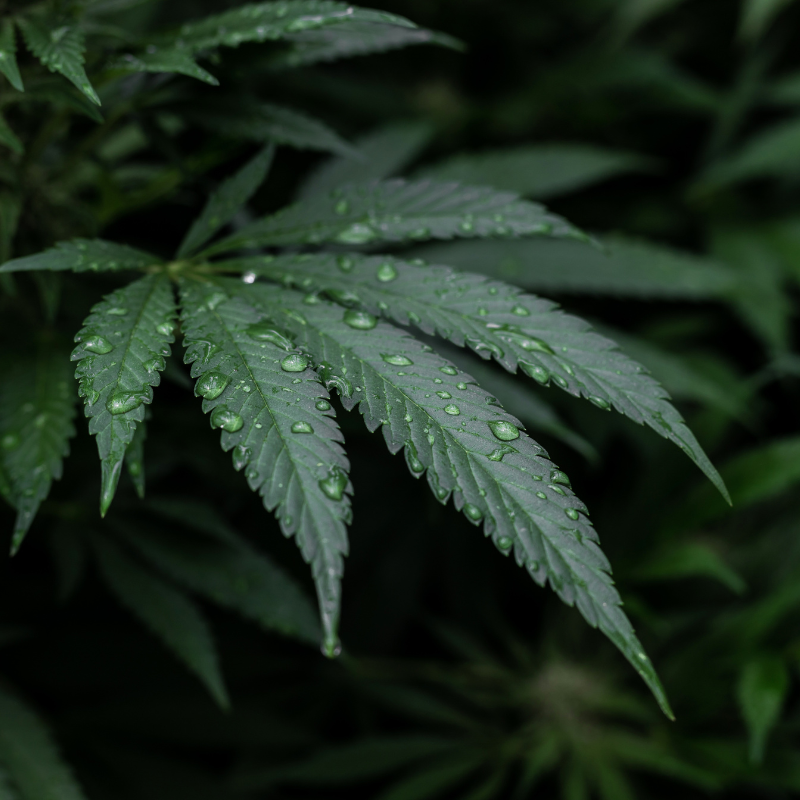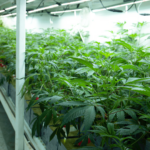Top 10 Water Parameters to Measure for Quality Cannabis Growth

As with all plants, quality water is needed to ensure healthy growth. When it comes to cannabis plants, it can be important to watch your water more carefully, as cannabis plants are oftentimes more sensitive than regular house plants. Here are our top 10 water parameters to measure and keep track of to ensure quality cannabis growth.
pH
Measuring the pH level of your water before using it to water your cannabis plants can be crucial to keeping your plants healthy. Checking your pH levels daily is recommended. If you are using a reverse osmosis system, changing the pH level of your water can be easy through pH solutions that can move your pH level up or down. The optimal pH range for your cannabis plants depends on whether you are using a soil-based or hydroponic growing method. The preferred pH range for soil-based growing is 6.0 to 6.8, and the preferred range for hydroponic growing is 5.5 and 6.5. While the pH of your water is important, the primary factor in how quickly water impacts the substrate pH is the alkalinity of the water.
Alkalinity
Measuring the alkalinity of your water is important, as high alkalinity levels in water can limit plant growth. High levels of alkalinity can occur in areas that sit on limestone bedrock and often occur throughout coastal cities and the midwest. The level of alkalinity in well water can change often through a variety of factors including well location, time of year, and the depth of the well. Testing the alkalinity of your water can help determine if change is needed to improve the overall quality of your water. Neutralizing alkalinity can be done through a number of methods including acid injection, using more acidic fertilizer, or using a different source of water altogether.
Electrical Conductivity
You can learn a lot about your water through measuring its electric conductivity (EC). Electrical conductivity is known as the electrical charge that moves through a solution. When measuring the EC of your cannabis plants, a lower reading can indicate a nutrient deficiency, where a higher reading can mean your plants are not absorbing enough nutrients due to too much fertilizer. When it comes to water specifically, checking the EC allows you to estimate the amount of minerals that it contains. For example, tap water often contains a larger salt content, making the water hold a higher EC level. Generally, your cannabis plants’ EC should begin around the 0.5-0.8 range, and slowly increase through its growing process, reaching as high as 1.8 to 2.1 in its fattening phase.
Ammonium Nitrogen and Nitrate Nitrogen
Ammonium Nitrogen and Nitrate Nitrogen can occur naturally in water supplies via environmental contamination. Plants can absorb nitrogen either as nitrate or ammonium, therefore the total uptake of nitrogen usually consists of a combination of these two forms. If higher levels of ammonium nitrogen or nitrate nitrogen are found in the water you use on your cannabis plants, some adjustment will be needed. The usual fix for this issue is to account for more Nitrogen in the fertilizer or the water you’re using. In all cases, a reverse osmosis system can remove any ammonium nitrogen or nitrate nitrogen from your water.
Phosphorus
Phosphorus is one of the many essential nutrients for cannabis plants. When your cannabis plant is suffering from a deficiency in phosphorus, symptoms of chlorosis in its leaves occur, which results in yellow leaves that ultimately fall off completely. On the other end of the spectrum, phosphorus excess can also cause issues among plants. An excess in phosphorus can lead to nutrient lockout of other vital nutrients the plant needs to grow. Phosphorus levels rely heavily on the pH level of the substrate and is essential in all stages of plant growth.
Sodium
Unlike phosphorus, sodium is not an essential nutrient. However, sodium can be used to assist in your plant’s metabolism, when used in very small quantities. Since sodium is not an essential element in cannabis growth, sodium “deficiency” does not cause any symptoms in plants. On the other hand, high amounts of sodium can be very damaging to cannabis plants. Sodium toxicity often appears as premature yellowing of leaves. Sodium levels in water exceeding 50 ppm can cause issues.
Iron
Iron is needed in cannabis plants to produce chlorophyll and is essential for the photosynthesis process. Similar to phosphorus, a deficiency in iron can lead to nutrient lockout. Iron deficiency can appear on cannabis plants as yellowing outside the veins of the marijuana leaf and burnt tips. High levels of iron in water can be responsible for orange colored deposits on leaves or equipment. Iron can find its way into well water through seepage in the form of rain or melted snow or through corrosion from old pipes.
Chloride
Chloride is another micronutrient needed for your cannabis plants to grow, but an excess of chloride can lead to chlorine toxicity. Chlorine toxicity, like many other plant issues, can appear in the form of browning or yellowing leaves. Chloride can be found in well water via runoff from road salt. It is recommended that growers shoot for less than 50 ppm of chloride in their water. Chloride remnants can be dissipated in rain water by allowing the water to sit in an open container for a day or two before use. Rain water in general, is often the water recommended most by cannabis growers.
Fluoride
In most municipalities, fluoride is found in tap water. The amount of fluoride it takes to be toxic to plants is .2 ppm. This is an issue as most city water systems are legally allowed to dose fluorine in the range of 1 ppm. Fluoride in plant foliage is an accumulative poison, meaning it can affect the plant gradually over time. Fluoride hinders photosynthesis and other processes. If using tap water, it is extremely important to check the levels of fluoride in your water before watering your plants.
Grow Flow Offers Water Testing and Reverse Osmosis Systems
To know where your water stands, it’s best to start with a water test. Professionals at Grow Flow, can offer water tests for your growhouse to assess the quality of water you are using. For many of the above water proponents, a reverse osmosis filter will remove unwanted materials from your water. With reverse osmosis water, you’ll be set with pure water that you can add your own nutrients as needed. Interested in a water test or learning more about a reverse osmosis system? Contact us today!





